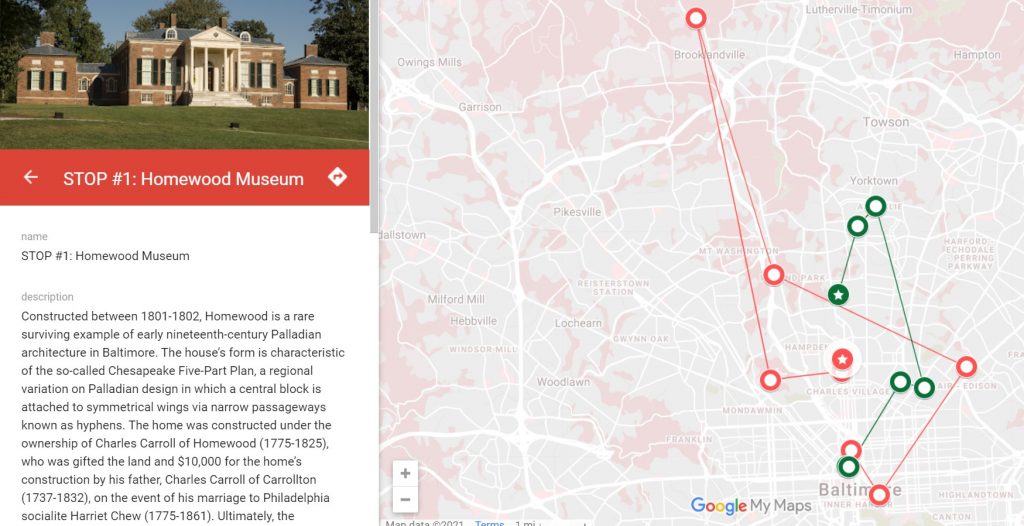The neighborhoods around Homewood Museum and Evergreen Museum & Library have changed greatly since the houses were constructed in 1801 and 1858, respectively. Both estates were used as country “villas” by wealthy families—the Carrolls at Homewood and the Garretts at Evergreen—and were located in what was then still Baltimore County. The lifestyles of these elite families were supported through the labor of enslaved Black workers at Homewood and at both houses by white working-class Baltimoreans.
Through these buildings, we have been able to trace the family relations and professional connections of the Carroll and Garrett families. However, viewed through another lens, these structures also offer a fascinating look at the transition of Baltimore’s estates into suburban and urban development. In tracking the history of the estates, it is important to recognize that these surviving homes depict the lives of a very privileged few who were interconnected through marriage and business ties in the Baltimore area. Similar connections linked enslaved Black workers and free white workers to estates in the Baltimore area as well. Existing research on the houses makes it near impossible to chart these relationships, however. Over the coming years, the Johns Hopkins University Museums hope to further study the broader web of relationships and connections among both enslaved Black workers and Irish immigrants at local estates to better understand the lives of those who labored in these houses.
Use the map to explore the neighborhoods around Homewood and Evergreen by foot, car, or bike. The histories of these estates and their neighboring properties tell the story of close-knit settlement patterns among Baltimore’s elite and how country estates eventually transitioned into suburban and later urban neighborhoods between the early 1800s and the first decades of the twentieth century. You can visit the map by clicking the image below or visiting this link.

